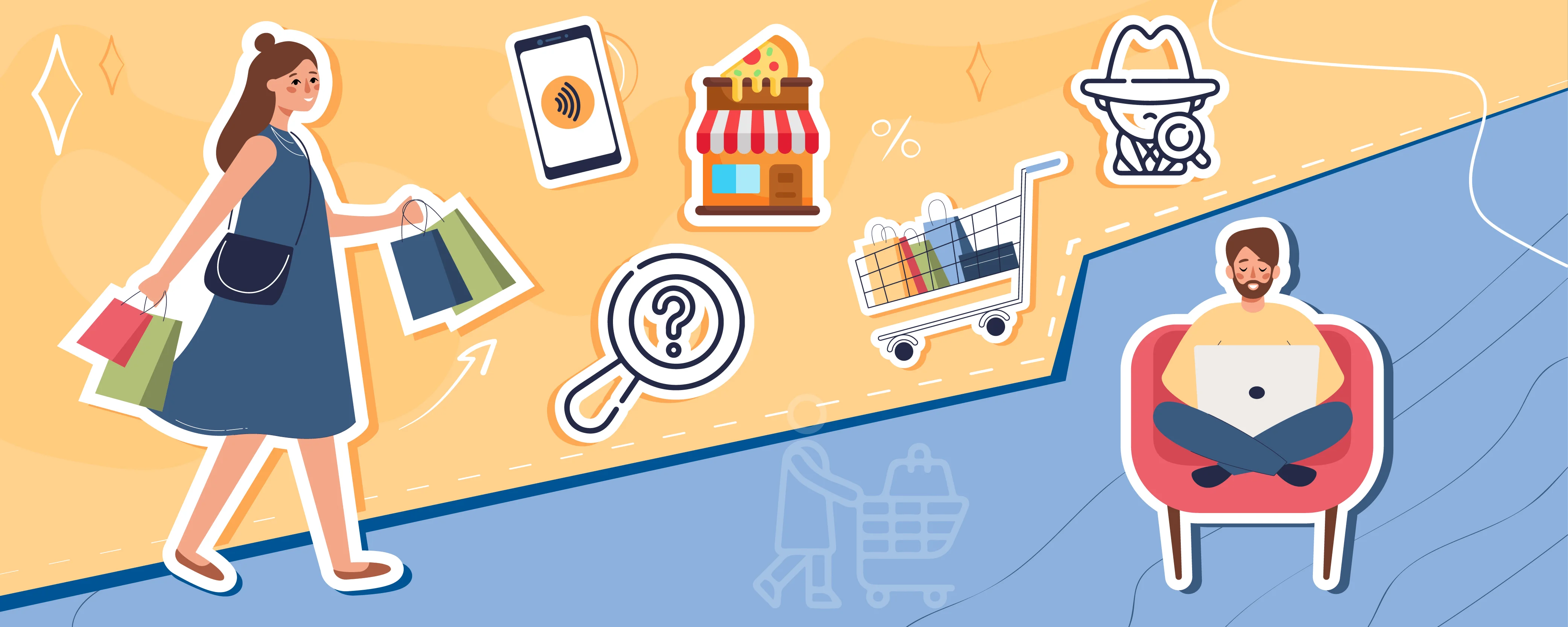Newsletter
ServicesPhygital Journeys: Mapping the Future of Customer Experience
Feb. 21, 2024

Every business; whether a startup, MSME or a well-established brand, grapples with a common challenge: bridging the gap between digital innovation and traditional business practices. Providing a seamless phygital shopping (Physical+Digital)experience is a must.
One such startup, offering advanced supply chain solutions, finds itself at the similar intersection of online engagements and offline relationships. The CEO, after a series of online demos, realizes the true essence of business during a discussion with a potential client. This moment of insight underscores the necessity of a phygital approach—blending digital power with the personal touch that has long defined Indian commerce.
This highlights how the integration of digital and physical touchpoints can forge deeper connections and drive growth in the business. To add to this story, a research suggests that 85% of shoppers expect and demand consistency during every interaction they have with a brand, no matter if it takes place online or in a brick-and-mortar store. Therefore, brands must make strategies to map customer journey that honor both the efficiency of technology and the warmth of personal interactions, offering a blueprint for success in the phygital era.
Phygital Era: The New Frontier in Customer Experience
The concept of phygital experiences highlights a pivotal shift in consumer behavior, where customers no longer distinguish between online and offline channels. Instead, they seek a seamless journey that transitions smoothly between the two. This growing importance is evident across various industries, from retail to banking, healthcare, and beyond. The evolution of customer journey mapping in this context becomes crucial. Traditional mapping techniques, while still relevant, must now incorporate digital touchpoints, social media interactions, and the physical experiences that customers value. This comprehensive approach enables businesses to understand and anticipate customer needs more effectively, ensuring that every touchpoint is optimized for engagement and satisfaction.
Challenges, Opportunities & Leveraging Technologies
One of the primary challenges is integrating disparate systems and channels to provide a unified customer experience. This phygital journey of customers should be mapped appropriately in order to provide them with a seamless experience irrespective of the channel they connect on.
So, this challenge also opens doors to innovation, allowing businesses to reimagine their customer engagement strategies. By leveraging data analytics and customer insights, companies can identify new ways to personalize interactions, enhance customer support, and streamline the buying process. Technology plays a pivotal role in bridging the gap between digital and physical marketplaces. Advanced analytics, artificial intelligence, and IoT (Internet of Things) are just a few examples of how technology can enhance phygital experiences. These tools not only facilitate smoother transitions between online and offline but also provide businesses with valuable insights into customer behavior and preferences. One such technology to gauge customer journey is an integrated mystery audit.
Mystery Shopping: The Savior for Businesses
By employing mystery shoppers to assess and interact with their brand across various channels, companies can gain invaluable insights into the customer experience from an omnichannel perspective. This feedback loop is invaluable in identifying gaps, assessing the effectiveness of customer service, and ensuring that brand promises are consistently met:
1. Omnichannel Experience Assessment: Businesses deploy secret shopping agents to evaluate the consistency and quality of the customer experience across digital platforms (websites, mobile apps) and physical stores. This strategy helps identify discrepancies or gaps in the customer journey, from online browsing and purchase to in-store pickups or returns.
2. Digital Interaction and Physical Experience Integration: Mystery shoppers design specific scenarios that require them to interact with both digital and physical touchpoints. For example, they might use a mobile app to reserve a product and then collect it in-store. This approach tests the seamlessness of integration between digital and physical services.
3. Customer Service and Support Evaluation: Evaluating the effectiveness of customer support channels, including chatbots, email, social media, and in-store assistance, is another critical strategy. Assessing response times, the accuracy of information provided, and the overall quality of support, offering insights into areas for improvement helps via digital mystery shopping.
4. Feedback Loop and Continuous Improvement: The insights gathered from mystery shopping are integrated into a continuous improvement process. Businesses analyze the data to make informed decisions on enhancing the phygital journey, implementing changes, and then using subsequent mystery shopping rounds to assess the impact of those improvements.
Some Successful Case Studies
A leading Indian luxury goods company, utilized mystery shopping to bridge the gap between its online presence and physical stores. Insights from the survey helped the brand refine its online appointment booking system and in-store service, resulting in a more seamless shopping experience that elevated customer loyalty and sales.
Another leading electronics retailer in India, employed mystery shopping to optimize its phygital customer journey. By assessing the coherence between online product information and in-store customer assistance, it was able to enhance its staff training programs, ensuring that customers received consistent and accurate information across all touchpoints, thereby improving overall customer satisfaction.
Therefore, the key to success lies in understanding and mapping the phygital customer journey, leveraging technology for actionable insights, and utilizing tools like mystery shopping to refine and enhance the customer experience.
Source: CMSWire, Mckinsey, Research &
Markets
